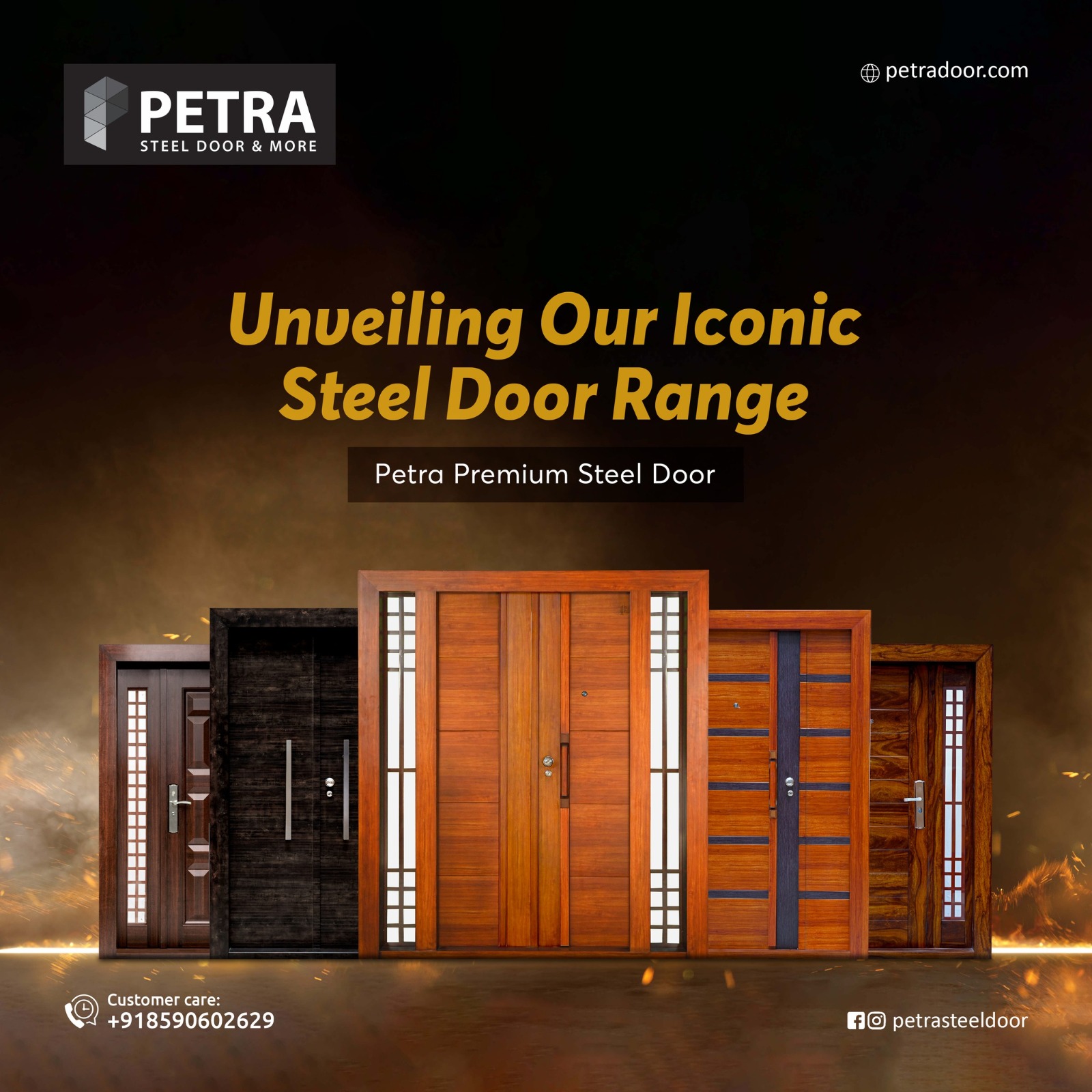Doors frame spaces and determine security, beauty, and longevity. Having the right material guarantees durability and usability. The most popular options are steel, wood, aluminum, and FRP (Fiber Reinforced Plastic).
The Importance of Choosing the Right Door Material
Each space needs a door that fits its function. Security, insulation, upkeep, and appearance are considerations. Furthermore, various materials possess unique advantages. The choice should consider price, longevity, and aesthetics.
Steel Doors: Strength and Security
Steel doors are known for their longevity. They offer unparalleled security and weatherproofing. New steel doors are resistant to rust, corrosion, and fire. They also need little upkeep. Residences and businesses tend to choose steel doors.
Advantages of Steel Doors
- Strong and long-lasting
- Very secure against forced entry
- Low maintenance with new coatings
- Weatherproof and fire-resistant
Steel doors in Khammam are also popular for use in commercial and residential applications. Steel doors harmonize strength with beauty. The top steel doors in Khammam are designed with better insulation and soundproofing.
Disadvantages of Steel Doors
- Prone to denting with heavy impact
- Conducts heat and cold in the absence of insulation
- Prone to corrosion without proper treatment
Wooden Doors: Traditional Elegance with Aesthetic Appeal
Wooden doors add a touch of warmth and sophistication. Their natural wood grain brings out the best in interiors. They are also good insulators. Yet, wood needs frequent maintenance. It tends to warp and get infested with termites.
Advantages of Wooden Doors
- Traditional and luxurious look
- Good heat and noise insulation
- May be decorated with carvings and finishes
Disadvantages of Wooden Doors
- More costly than other materials
- Needs frequent polishing and maintenance
- Vulnerable to termites and water damage
Aluminum Doors: Modern and Lightweight
Aluminum doors offer a clean, contemporary look. They are resistant to rust and corrosion. They are also lightweight but durable. Their versatility ensures they are widely used in modern environments.
Advantages of Aluminum Doors
- Rust- and corrosion-resistant
- Lightweight and easy to install
- Can be found in several finishes and colors
Disadvantages of Aluminum Doors
- Less durable than steel
- Transfers heat and cold, necessitating thermal breaks
- Dents when subjected to pressure
FRP Doors: The Future of Durable Doors
Fiber Reinforced Plastic (FRP) doors combine strength and beauty. FRP doors withstand moisture, chemicals, and impact and also maintenance-free and lightweight. FRP doors are usually used in hospitals, schools, and laboratories.
Advantages of FRP Doors
- Very high moisture and chemical resistance
- Does not warp, crack, or rot under any condition
- Lightweight but strong
Disadvantages of FRP Doors
- More expensive compared to conventional materials
- Not widely available in some markets
- May not match the appearance of all interiors
Comparing Door Materials
| Feature | Steel | Wood | Aluminum | FRP |
|---|---|---|---|---|
| Durability | High | Medium | Medium | High |
| Maintenance | Low | High | Low | Low |
| Security | Very High | Medium | Medium | High |
| Cost | Medium | High | Medium | High |
| Aesthetic Appeal | Moderate | High | High | Medium |
| Weather Resistance | High | Low | High | Very High |
Which Door Material is Best for You?
Your needs determine the right choice. Steel doors provide maximum security. Wooden doors are classically beautiful. Aluminum doors are ideal for modern spaces. FRP doors provide low maintenance with durability.
For residences and offices that need security, steel doors in Khammam continue to be the preferred option. On the other hand, style-oriented interiors enjoy wooden doors. In hot and humid weather, aluminum or FRP doors are best.
Conclusion
Selecting the proper material for the door balances aesthetics, security, and durability. The best steel door in Khammam provides high protection with sophistication. At the same time, wood, aluminum, and FRP suit other requirements. Knowledge of their strength facilitates an educated choice. At the end, the ideal door is purpose- and environment-specific.


